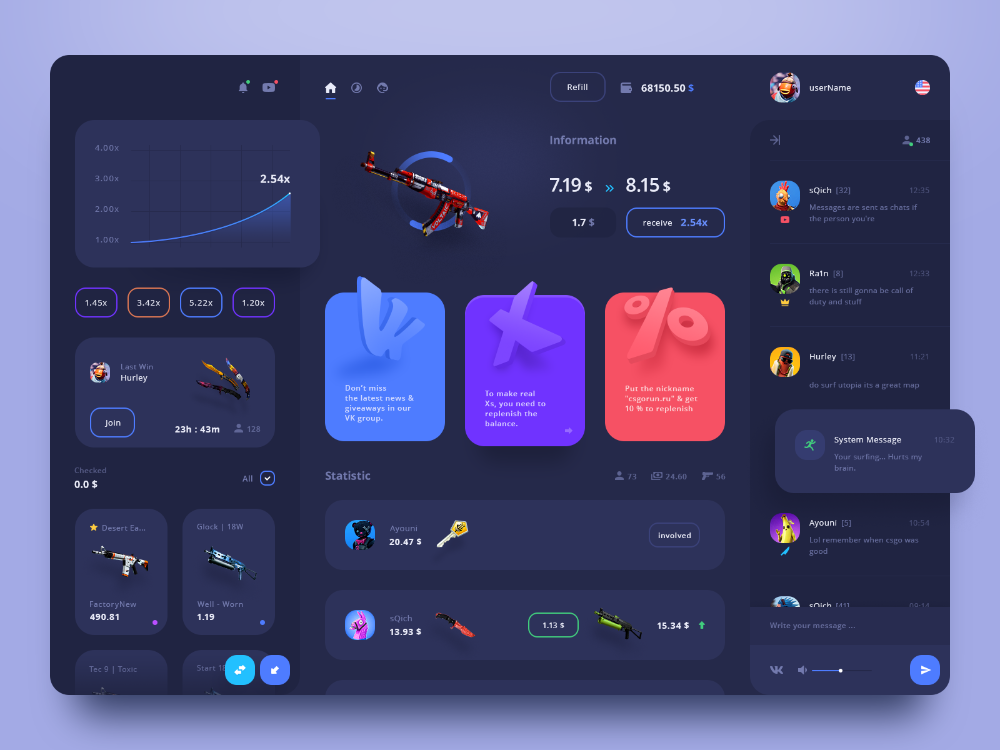Freelancing as a web developer offers the freedom to work on your terms, be your own boss, and choose the projects you’re passionate about. However, the path to becoming a successful freelancer isn’t always easy, especially in the competitive field of web development. To stand out and build a thriving freelance career, you’ll need to combine technical expertise with business acumen, marketing savvy, and client management skills.
Here’s a comprehensive guide on how to become a successful freelance web developer.
1. Master Your Web Development Skills
Before you can become a successful freelance web developer, you need to be excellent at your craft. Here’s how you can enhance your skills:
- Learn Frontend Development: HTML, CSS, and JavaScript are the building blocks of web development. Familiarize yourself with frameworks like React, Angular, or Vue.js, which are widely used in building modern web applications.
- Learn Backend Development: Backend development powers the functionality of websites. Learn languages like Node.js, Python (Django, Flask), PHP, or Ruby on Rails for server-side programming.
- Get Comfortable with Databases: Most websites require a database. Learn SQL (MySQL, PostgreSQL) and NoSQL databases (MongoDB) to manage data.
- Responsive Design: With mobile users growing, ensure you can create responsive designs that look great on any device.
- Version Control: Learn Git and GitHub to manage your projects, collaborate with other developers, and showcase your work to potential clients.
To build your confidence, work on a portfolio of personal projects that showcase your skills. This will serve as a resume to demonstrate your expertise to clients.
2. Build a Portfolio Website
Your portfolio is your most important tool as a freelance web developer. A well-crafted portfolio will showcase your technical skills, creativity, and past projects. Here’s what your portfolio should include:
- Featured Projects: Highlight your best work, whether they are client projects or personal ones. Explain your role in each project, the technologies used, and any challenges you overcame.
- Testimonials: If you’ve worked with clients before, ask them for feedback and add these testimonials to your portfolio.
- Your Services: Clearly outline the services you offer (e.g., frontend development, backend development, full-stack development, or e-commerce solutions).
- Contact Information: Make it easy for potential clients to contact you through a contact form, email address, or social media links.
Remember, your portfolio itself should reflect your skills, so ensure it’s well-designed, responsive, and user-friendly.
3. Choose Your Niche
Web development is a broad field, and focusing on a specific niche can help you stand out in a crowded market. Choosing a niche allows you to market yourself more effectively, tailor your services, and charge premium rates for specialized work. Some niches to consider include:
- E-commerce Websites: Specialize in building online stores using platforms like Shopify, WooCommerce, or custom-built solutions.
- WordPress Development: WordPress powers a large portion of the web, making it a great niche for developers who want to create custom themes and plugins.
- Custom Web Applications: Focus on building complex, interactive web applications for businesses.
- Single Page Applications (SPAs): Build fast, user-friendly applications using JavaScript frameworks like React or Angular.
By focusing on a niche, you become an expert in that field, which makes it easier to attract clients who need that specific skill set.
4. Set Your Pricing Strategy
One of the most challenging aspects of freelancing is figuring out how much to charge. Here’s how you can develop a pricing strategy:
- Hourly Rates: Determine a fair hourly rate based on your skill level, experience, and the complexity of the work. Beginners might charge lower rates initially, while experienced developers can charge more. Tools like Glassdoor or Upwork can help you research average rates in your region.
- Fixed Rates: For certain projects, it might make more sense to charge a flat fee. This is common for small projects with a clearly defined scope, like creating a simple landing page or WordPress site.
- Retainers: Once you’ve built a relationship with a client, you might offer a monthly retainer. This guarantees steady work and income over a specified period.
Remember to factor in the time spent on revisions, client meetings, and administrative tasks when calculating your rates.
5. Find Clients
Finding clients is a critical aspect of freelancing. Here are a few ways to land your first clients:
- Freelance Platforms: Sites like Upwork, Fiverr, and Freelancer are great for finding short-term projects, especially when you’re starting out. These platforms offer a wide variety of jobs but often have stiff competition, so start by bidding on smaller projects to build your profile.
- Networking: Tap into your existing network of friends, family, and colleagues. Let them know you’re offering web development services, and ask for referrals. Joining local tech or developer meetups is also a good way to connect with potential clients.
- Cold Outreach: Identify small businesses, startups, or entrepreneurs who may need web development services, and reach out directly with a personalized pitch.
- Social Media: Platforms like LinkedIn, Twitter, and Instagram can help you build a professional brand. Share your work, engage with others in your industry, and join relevant groups or discussions.
- Your Portfolio Site: SEO-optimize your portfolio so potential clients can find you through organic search. Also, consider writing a blog or case studies on your portfolio site to demonstrate your expertise and attract more visitors.
6. Master Client Communication
One of the key differences between successful and struggling freelancers is how well they communicate with clients. Clear, transparent communication is essential for building long-term relationships. Here’s how you can improve your client communication:
- Set Clear Expectations: At the start of a project, clearly outline the project scope, timeline, deliverables, and cost. Make sure the client knows what to expect to avoid misunderstandings later.
- Regular Updates: Keep your clients informed about the progress of their project. Send weekly or bi-weekly updates, showing what you’ve completed and what’s next.
- Handle Feedback Professionally: Clients will likely ask for changes or revisions. Be open to feedback and handle revisions gracefully without taking them personally.
- Use Project Management Tools: Tools like Trello, Asana, or Slack can help you manage client projects, share updates, and streamline communication.
Good client relationships are the foundation of a successful freelancing business. Happy clients are more likely to give you repeat work and refer you to others.
7. Learn Time Management and Productivity Skills
Freelancing requires excellent time management skills. You’ll be juggling multiple projects, deadlines, and client meetings, so managing your time effectively is crucial. Here are some tips:
- Set a Schedule: Even though freelancing gives you freedom, having a set routine helps maintain productivity. Block off time for specific tasks like coding, client meetings, and administrative work.
- Use Time-Tracking Tools: Tools like Toggl or Clockify help you track how much time you spend on each project, ensuring you’re billing accurately and managing your time effectively.
- Avoid Burnout: Freelancing can sometimes lead to overwork, especially when you’re handling multiple projects. Make sure to take regular breaks and set boundaries between work and personal life.
8. Continue Learning and Evolving
Web development is a constantly evolving field, and staying updated with the latest trends, technologies, and best practices is essential for maintaining a competitive edge. Here’s how you can continue growing:
- Learn New Frameworks and Tools: As new frameworks and tools emerge, learning them can help you deliver better solutions for your clients. For instance, if you’re a frontend developer, mastering a JavaScript framework like Next.js or Svelte could set you apart.
- Stay Informed: Follow web development blogs, join online communities, and take part in webinars or workshops to stay on top of industry trends.
- Invest in Your Skills: Regularly invest in yourself by taking courses, attending conferences, or working on side projects that push your skills further.
Conclusion
Becoming a successful freelance web developer takes more than just technical expertise. It requires mastering client communication, finding your niche, building a strong portfolio, and learning how to manage your time and business effectively. With patience, dedication, and a commitment to continuous learning, you can build a rewarding career as a freelance web developer. Whether you’re working on small projects or collaborating with big brands, freelancing offers the freedom to shape your own career and achieve your personal and professional goals.





